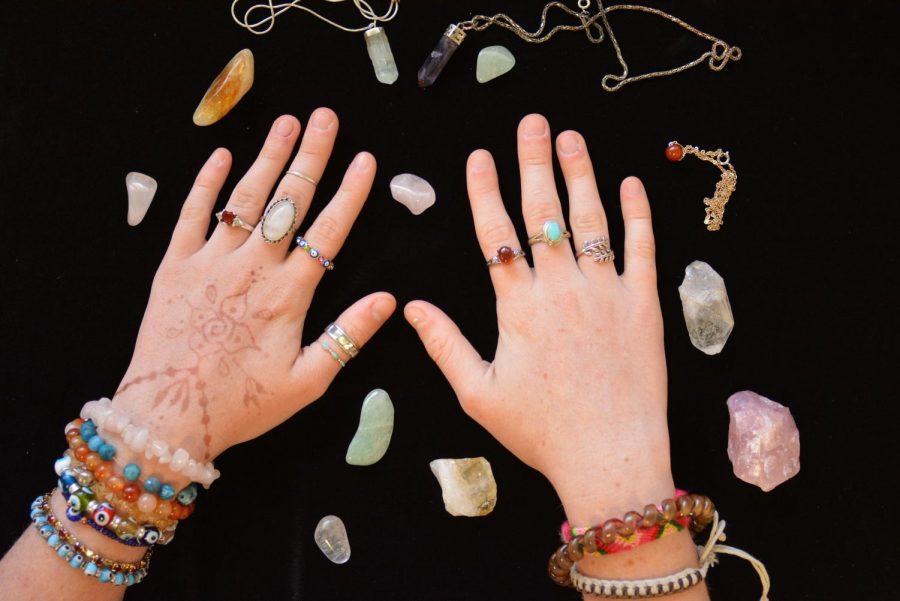The Influence of Crystals
Crystals can adorn the hands and wrists in the form of jewelry in order to keep their safeguarding, protective properties nearby.
October 14, 2021
There is a rise in popularity of metaphysical objects, like crystals, in everyday life. Post-pandemic especially, the appreciation of the spiritual purposes of crystals has grown, and consequently so has the cultural appropriation of the religions who inspired wellness culture.
The glossary definition of metaphysical is “a type of philosophy or study that uses broad concepts to help define reality and our understanding of it.” Crystals are used in the metaphysical sense as people believe that they can influence or improve their lives or realities through the use of them.
Metaphysical shops sell an assortment of items ranging from smudging kits, incense, candles, jewelry, and crystals.
Easily one of the most portable objects, healing crystals are a branch of alternative medicine. While their use is not scientifically proven, people are still drawn to them. This would make sense, given that the word crystal comes from a Greek word “krystallos”, which means “coldness drawn together”.
There are different types of healing crystals, all specific to an area of life that may require healing. The most commonly known would be crystals like rose quartz; used for attracting love, whether it be generating love for oneself or attracting love from someone else; and amethyst; used for helping to protect the mind from anxious thoughts.
Local metaphysical shops even have books like the Crystal Bible, a basic thesaurus for a wide variety of crystals and their specific purposes.
Speaking from personal experience, while I can say that crystals have not changed my life, they do give me peace of mind. I feel safer having the black tourmaline under my driver’s seat and the carnelian necklace draped across my neck. While I know my worth and potential without their usage, there is peace of mind in the possibility of enhancing that already intrinsic potential.
While the use of crystals may originally seem harmless, it is important to monitor when this usage becomes harmful, as many wellness practices are actually questionable forms of cultural appropriation. Wellness transforms into cultural appropriation when smudge kits are bought from non-Indigenous individuals and spiritual objects such as scriptures, crystals, and statues of Buddha are misused.
If you want to avoid the misuse of crystals or the cultural appropriation of Buddhism, as well as other religions, it is important that you’re doing your own research. Be careful of retraumatizing BIPOC communities, and do not rely on BIPOC communities to educate you, do the work yourself. One way to do this is by seeking out teachers who are part of the community.
Whether you personally believe in them or not, there are cultures who do. There is respect in not invalidating the beliefs of other religions. At the same time, crystals and the wellness culture should be spaces dominated by BIPOC people who follow the religions the traditions originated from. It is important to not let the line of appropriation and appreciation bleed, especially with such an interesting topic, like crystals.



